This story is part of Next Generation, a series in which we give young makers a platform to showcase their work. Your work here? Get in touch and plot your coordinates as we navigate our future together.
Marie Walker-Smith is a London based architectural designer whose work speculates on the future of the non-human. Her postgraduate project titled Bionic Landscapes & Superhyphae is a thesis project, written to accompany The Last Forest: Rothiemurchus 2098. The project proposes a thought-provoking, speculative scenario on the future of forests. Set in the year 2098, the Rothiemurchus forest is one of the last remnants of a global project from the United Nations which aimed to preserve the last biodiverse places on earth. This ‘safe haven’ was separated from mankind, and replaced by an intelligent robotic infrastructure, designed to maintain the forest. We discover the place from the perspective of a biologist, within a mysterious world where nature itself appears to have evolved with the help of intelligent machines. Through her project, Marie aims to fundamentally question the purpose of architecture in design, shifting design towards the non-human. We met with Marie to discuss the project, the benefits of cybernetic ecology and becoming custodians for nature through distanced authorship.
What inspired you to create the project Bionic Landscapes & Superhyphae?
Bionic Landscapes was the original title for my MAach (Master’s in Architecture) degree thesis, which I wrote in my final year, 2019. It was written to comprehensively examine the themes behind my design project, The Last Forest. The thesis was condensed into a 15 minute presentation, with the design module’s resulting film being screened at the end, but broadly speaking the main themes of the research were concerning the symbiosis between nature, humanity and technology, the exciting research into mycorrhizal networks, and climate change.
The research were concerning the symbiosis between nature, humanity and technology, the exciting research into mycorrhizal networks, and climate change.
It’s important to note that I’m not at any point pretending to be a biological expert, but rather as part of the degree I decided to create a future-cast narrative, with basis in fact. In drawing tangents from now and extrapolating them into the future, I selectively interpreted how that prospective future would be, and in this case it would be a planet left with little to no remaining natural woodland, with human overpopulation continuing to threaten to upset any fragile status quo.
Within the forest you propose an ecosystem of natural species that live in symbiosis with their robotic counterparts. Can you speak about this relation between the natural species and the robots?
The robots themselves, while it could be interesting to imagine how they’d interact with their warm-blooded equivalents, had their designs chosen more on the basis that similar physiologies had successfully evolved to thrive in the forest. For example, the deer-shaped machine has a sturdy composition that could enable it to carry heavy loads, the fox facsimile is more adept at stealth, surveillance and mild aggression. The robots are intended to act as tools for the governing artificial intelligence system, which I named FERN (Forest Engagement and Rehabilitation Network), to best maintain the forest, and while some have a role in monitoring the welfare of the actual animals in the forest, they aren’t paired up to corresponding species, so to speak.
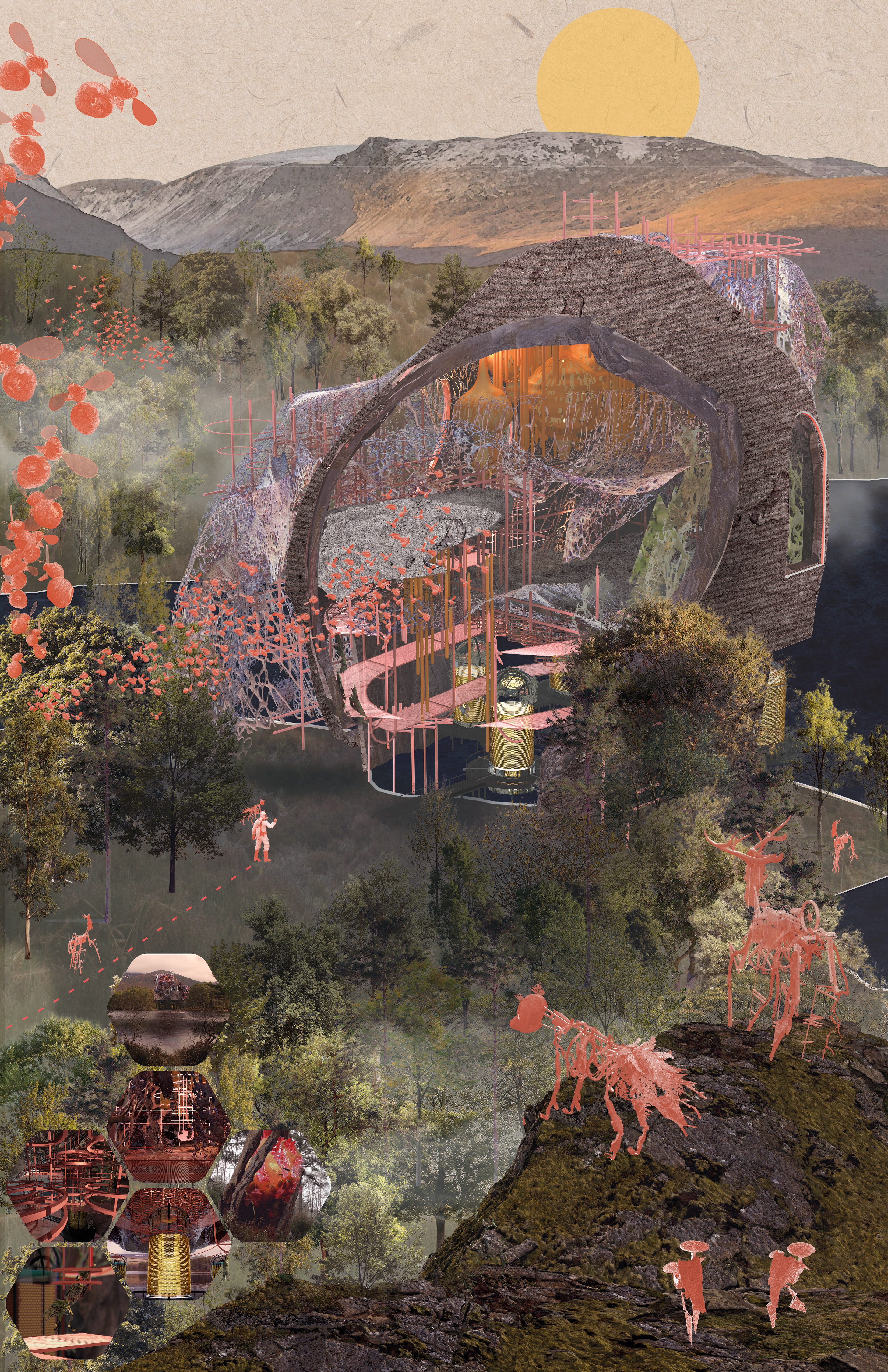
Each robotic worker has its own role, can you elaborate on those?
Absolutely, it was really enjoyable coming up with fictional robots that fulfil the basic requirements a forest may have in surviving in such a hostile environment. I used my partner John as a sounding board for these names, like the B.E.A.V.E.R., or the Buzzsaw-Equipped Arboreal Value Extractor and Re-planter, whose role is to carry out tree surgery, pruning and coppicing (i.e. to cut). The B.E.E. (Basic Environmental Engineer) as the only flying machine travel most quickly across the forest, and can facilitate pollination across the whole site, they can carry out cloud-seeding operations or fire suppression.
The S.T.Ag (Sizeable Task Aggregator) and F.O.C.C.S. (Forest Oversight Custodian and Coordinate Surveyor) are tasked with haulage and patrols, with means for sedation and moving of intruders. Finally, the B.A./R.C. (Biological Assessment/ Refuse Collector), the simplest of the machines, are simply deployed in their thousands to survey and monitor the forest’s plant and creatures’ wellbeing.
How would such a forest sustain itself without human interaction?
The principle that informed so much of this project is Erle C. Ellis’ concept of distanced authorship, where humans can use AI to objectively and effectively act as custodians for nature. So, while humans aren’t physically permitted to travel into the forest in this case, their presence is felt, whether in terms of the atmospheric conditions, or indirectly through the creation of this system.
The principle that informed so much of this project is Erle C. Ellis’ concept of distanced authorship, where humans can use AI to objectively and effectively act as custodians for nature.
Beyond the original initiative, the project intends for the AI system to be able to run a closed-loop system, recycling old robotic components, utilizing the limestone slurry on the banks of the loch and being able to otherwise extract natural resources. In my thesis I also explored the possibilities of the AI system practicing land management on the periphery of the forest, such as offering specific portions of the land for cropping by local farmers in return for income that can be used to purchase any other assets, or in earlier years to be able to broadcast requests for materials that also could then be delivered to a designated entrance.
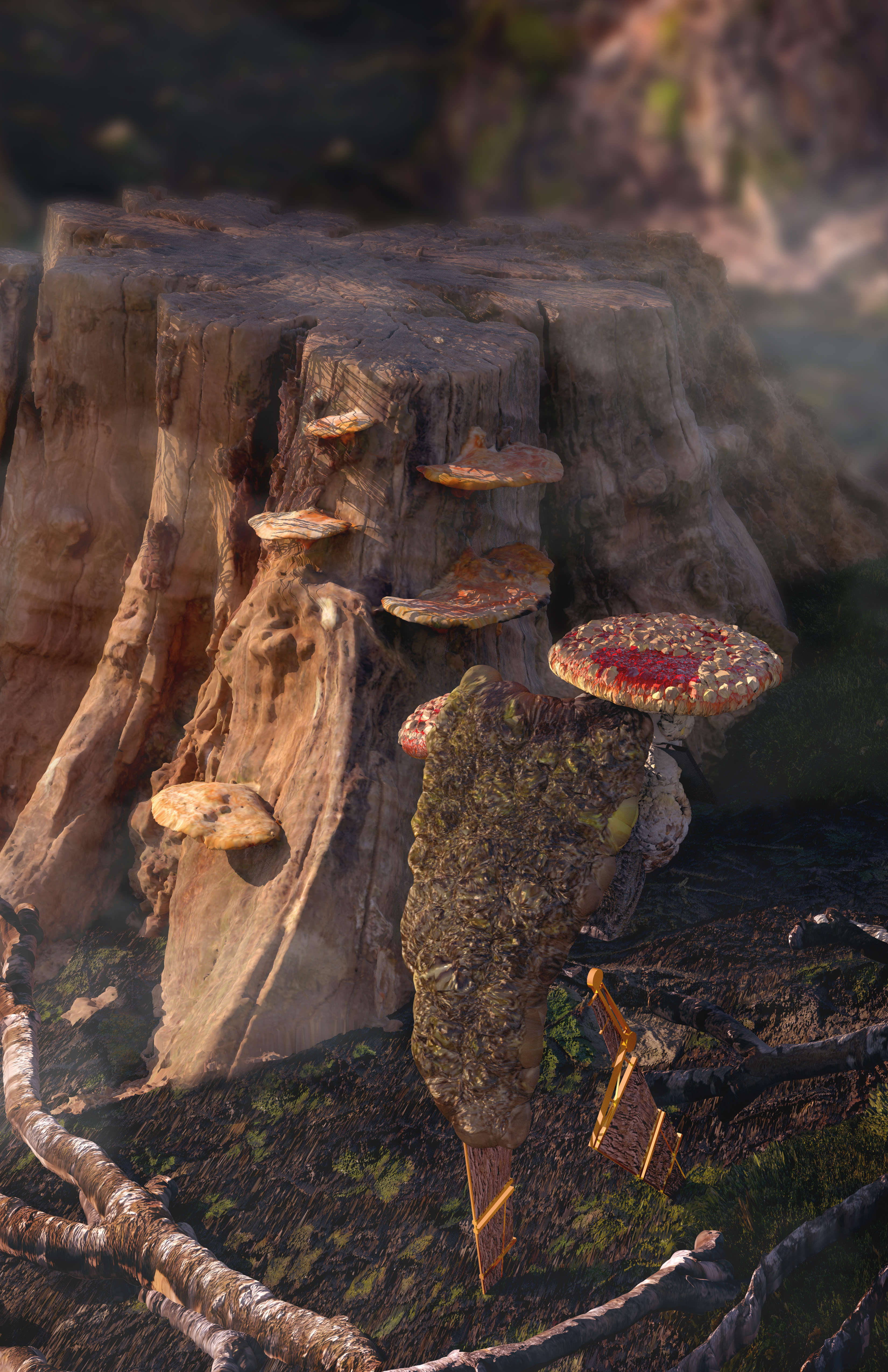
Tell us about ‘cybernetic ecology’ and how this may change our definition of nature.
This “cybernetic ecology” is a proposed forest, nearly 80 years in the future, where technology has allowed us to interpret and understand and perhaps even synthesize signals in mycorrhizal fungal networks, which carry information such as water, nutrient and predator (pest) levels. This hypothetical progress in technology would thus facilitate an intervention in how forests distribute their resources, meaning we could then artificially enhance and modify it so it runs at peak efficiency. In short, it means that in being able to understand the state of being of each plant in a forest, decisions can be made by an AI system to decide where to allocate resources.
This “cybernetic ecology” is a proposed forest, nearly 80 years in the future, where technology has allowed us to interpret and understand and perhaps even synthesize signals in mycorrhizal fungal networks, which carry information such as water, nutrient and predator (pest) levels.
In my work, both written and spoken, I’ve been very careful in how I frame this; it’s an outcome that I desperately want to stay in the realm of fiction. The conditions that lead to this cybernetic ecology are if the population keeps growing, climate change restricts where we can live as more land becomes inhabitable due to natural hazards, and atmospheric conditions make too hostile for natural woodlands to survive.
Do you truly believe that technology can enhance the ‘natural’ intelligence of a forest? Isn’t a forest intelligent of itself? Does it need human-made technology?
I honestly believe that nature is best left alone; it would be in a far superior condition if humanity’s impact didn’t exist. The fiction explored in my work is definitely more of a cautionary tale, a “what-if” should we continue to disproportionately consume and pollute. A forest quite possibly is already optimally run by its own inhabitants, and it certainly doesn’t need human-made technology to exist, and never has. What I fear, however, is a future where man-made intervention may become necessary to keep species from becoming extinct, and so even the remnants of nature are corrupted. Again, I hope this doesn’t become the case, I think that what makes nature so beautiful to us is how perfect it is without a human hand in its creation.
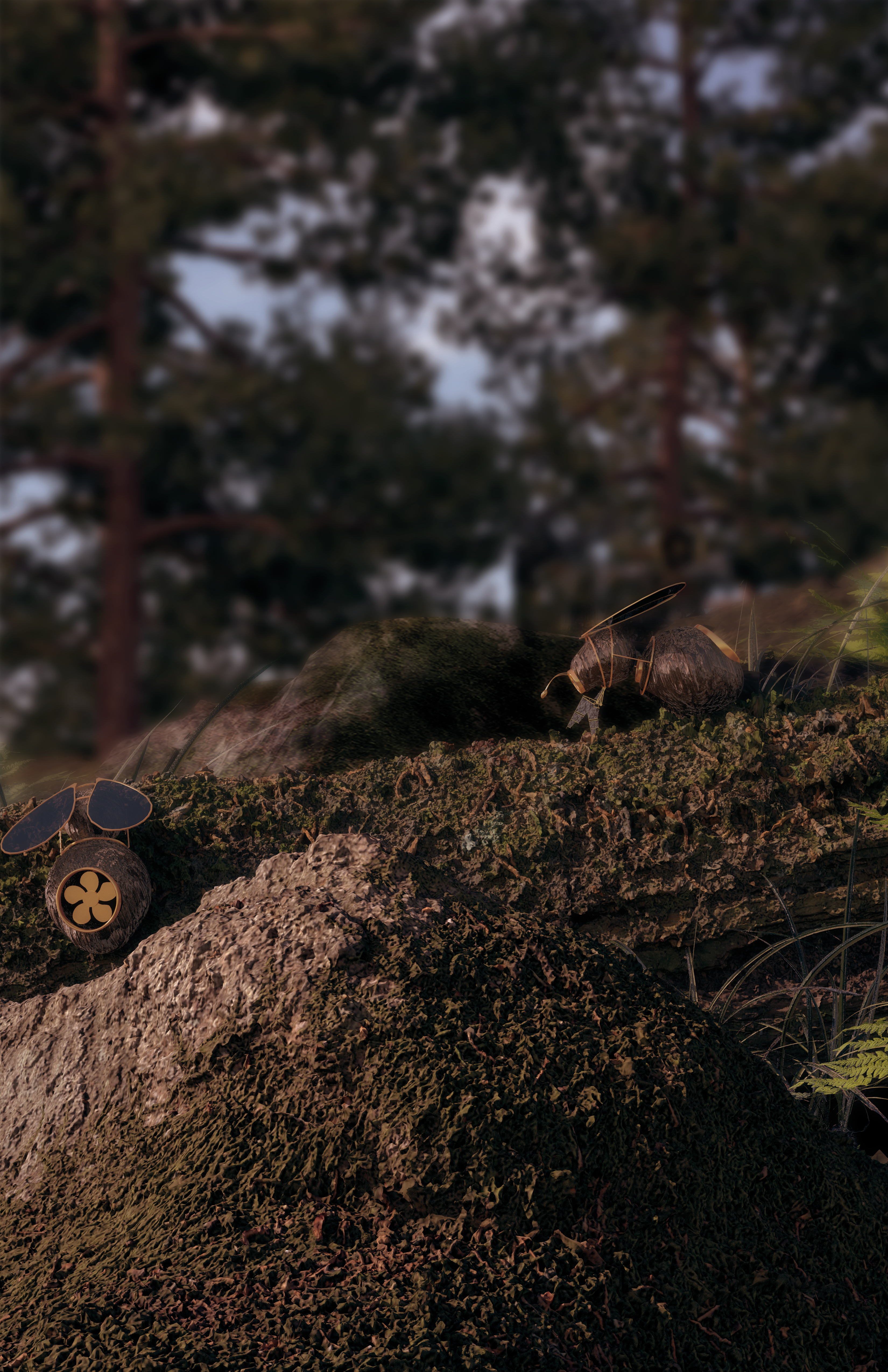
Why is it important to envision futures for the non-human on our planet?
At first, I thought it was just good manners- since before I started my undergraduate degree in architecture, I always admired designers who could make their buildings adapt to the site where not a single tree limb would have to be severed, and not a single bird’s nest disturbed. I think part of reconciling our role in Earth’s ecology is to recognize that we have neighbors that need to be considered, and if we have to build, we should provide options for local wildlife too.
I think part of reconciling our role in Earth’s ecology is to recognize that we have neighbors that need to be considered, and if we have to build, we should provide options for local wildlife too.
As we enjoy being at the top of the food chain, it’s important to remember that that balance is extremely delicate; if the bees die out, for example, then our plants will not pollenate sufficiently, which would set off an irreversible collapse of our food supply. So it isn’t only a good gesture, it actually becomes necessary to consider how we can foster better ecological relationships in everything we do. I believe it needs to be ingrained in us from childhood, and maintained.
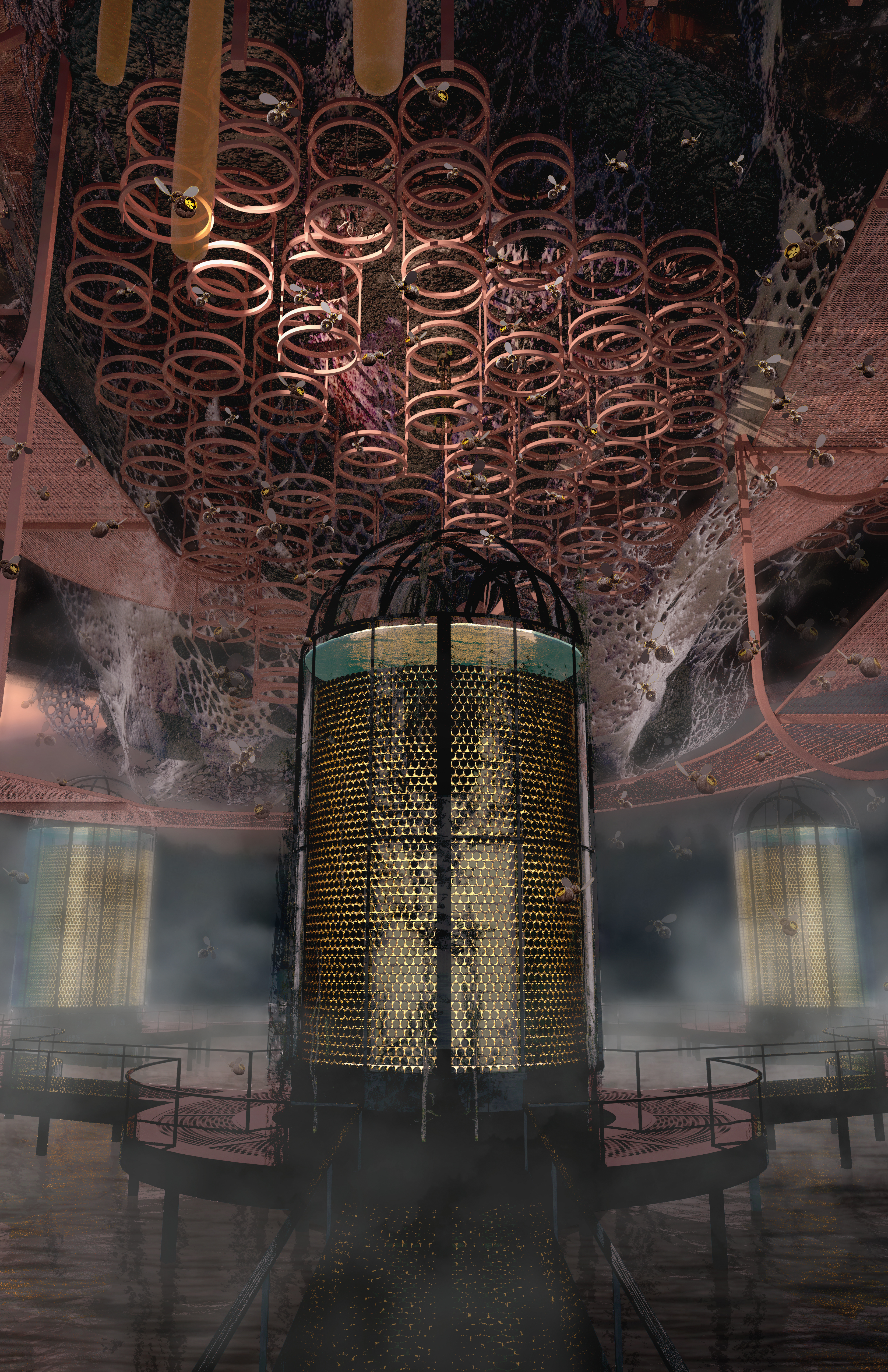
The project is set in the year 2098. Why this year? And how may we benefit from this future-forward thinking?
I chose 2098 as, for one, it was 80 years from the academic year that I started the project, but also, it marks the near-end of our current century and finally is a likely contender for when our population may double to about 14 billion. The doubling of our population, if today is any reflection of how our behavior will be, almost entirely bad news for the planet as injustices accumulate and resources are depleted. I’d like to emphasize that overpopulation isn’t strictly the issue here, but overconsumption is; and the more the population grows, the wealth gap also widens as poorer populations get priced out of increasingly scarce essentials.
Trying to predict the future is never an exact science; it’s too often that we see headlines regarding climate change that mention how we overshot or exceeded expectations in terms of temperatures rising or accelerating emissions, that I’ve been led to believe that there are endless possibilities for what direction we’ll go in; that is to say, however, that I think it’s useful to future-cast (consider hypothetical futures) as it helps us to learn the lessons that we’d otherwise be subject to today, when we may be in a better position to prepare for, or avoid, any further loss of life, biodiversity or wellbeing. Not that I think we need any more reason to act in that regard.
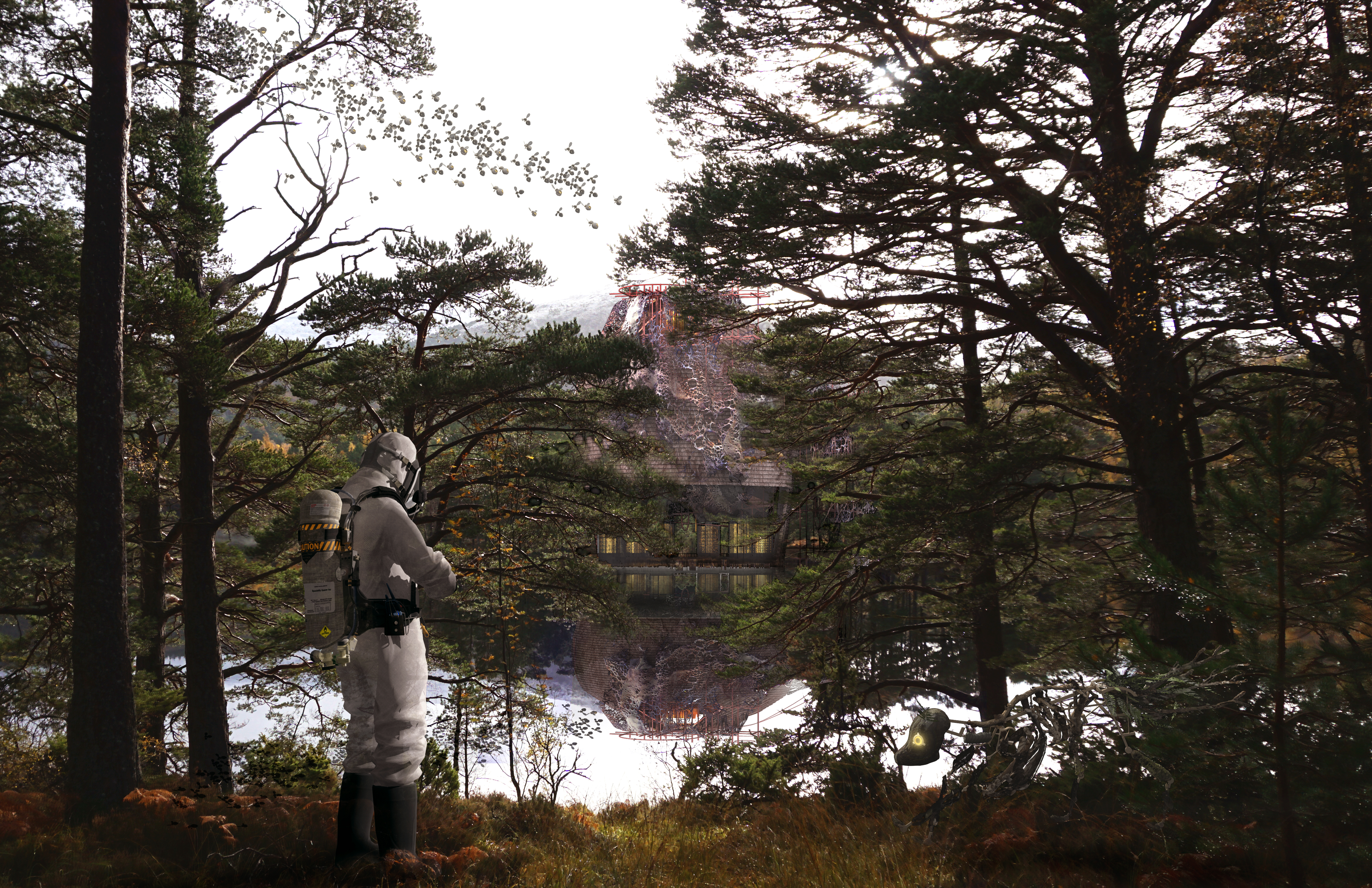
rwlydkqdox
Muchas gracias. ?Como puedo iniciar sesion?
Muchas gracias. ?Como puedo iniciar sesion?
Posted on